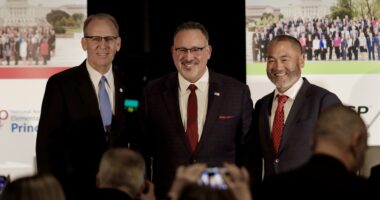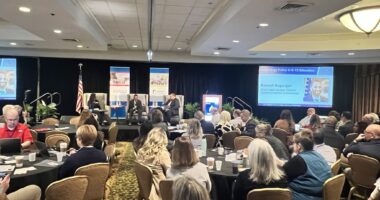LGBTQ Inclusion at the Elementary Level
In celebration of Pride Month, an elementary school principal outlines in this Principals’ Voices in School Equity blog post steps to make schools a safe space for LGBTQ students.

When it comes to LGBTQ issues in education, this quote is a particular favorite of mine: “Inclusion is not tolerance; it is unquestioned acceptance.” I first stumbled across it years ago, though I can’t say for certain exactly when or where. Despite the fact that I’ve not yet been able to pinpoint its author or origins, it has resonated strongly with me.
We know that successful inclusion in education means including all diverse and exceptional populations; that’s pretty much “elementary” for educators, if you’ll pardon the pun. But I’m going to drill down a bit further than just the general inclusion and hone in on what inclusion for the LGBTQ population looks like, specifically at the elementary level. I’ve found there is quite a bit of information available regarding LGBTQ inclusion at the middle and high school levels, but not nearly as much for the elementary level. That’s where NAESP—and its members—come in to provide resources like this that add to the ever-growing body of information that exists on a topic that not only isn’t going away but rather is going to become more prolific in our profession moving forward.
Less Tolerating, More Celebrating
Gone are the days of using the term “tolerate” when referring to diversity because it means “to put up with.” This implies that those doing the tolerating are not always doing so willingly, and often they are not doing so enthusiastically. Tolerance is the absolute bare minimum anyone should exhibit toward diverse populations. When addressing the topic of LGBTQ inclusion at the elementary school level, schools need to exhibit much more than mere tolerance. Educators must make the conscious choice to accept, embrace, and celebrate it, and must do so without question and without hesitation.
Accept, Embrace, and Celebrate
While many educators already accept, embrace, and celebrate their LGBTQ students readily and easily, not all educators do. That is why the elementary school principal’s role in modeling this “accept, embrace, and celebrate” mentality is so very critical. Educators must be able to look to their school leaders for guidance and direction in what are sometimes uncharted waters for them. For some educators, LGBTQ ideas (particularly at the elementary level) are, indeed, uncharted waters, and, as their leaders, principals must help them learn to chart these waters, so that they can be a solid source of support to their LGBTQ students, who are undoubtedly exploring new and uncharted waters themselves.
Explore Personal Biases and Beliefs
So how do we, as leaders, model LGBTQ inclusion for our teachers and staff, so that they can then model it in their classrooms? We must first be willing to examine and explore our own personal biases and beliefs so that we do not allow them to get in the way of doing what is best for students. It is important to dispel the notion that people must completely understand and agree with someone to be able to accept them. Such a notion ultimately sets up people for failure due to the innumerable complexities of—and differences in—humans as a whole.
Start With Empathy and Compassion
For elementary educators and school leaders who find themselves unsure of how to approach LGBTQ inclusion overall, approach it from the heart and a place of empathy and compassion rather than from the mind and a place of logic and sometimes fear. For people who are unsure of their feelings on LGBTQ issues in general, this approach can help them more easily accept something they don’t fully understand. Once the acceptance is solidly and comfortably in place, it’s easier to move toward embracing and celebrating—both of which are critical components of LGBTQ inclusion at the elementary level.
LGBTQ students need to believe that their school is a safe place for them to be who they are and to live and learn in their truth. They need their school leaders and their school culture and climate to show them that their representation is as important a piece of the school’s tapestry as the representation of their non-LGBTQ classmates. A safe and celebratory school environment is essential for all students, but particularly for LGBTQ students, as in some instances their homes are neither safe nor celebratory places for them to be themselves. Schools must send the message loud and clear that their LGBTQ students are accepted, loved, and protected, and it is our jobs as leaders in our schools to model and promote that message every single day.
Seth Daub is principal of Orange County Public Schools Academic Center for Excellence.




